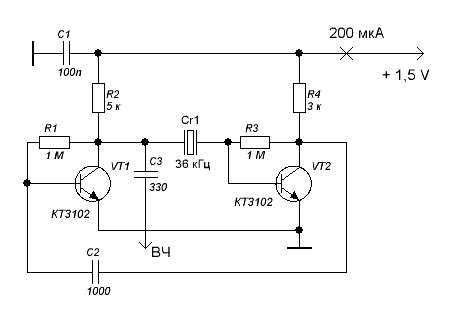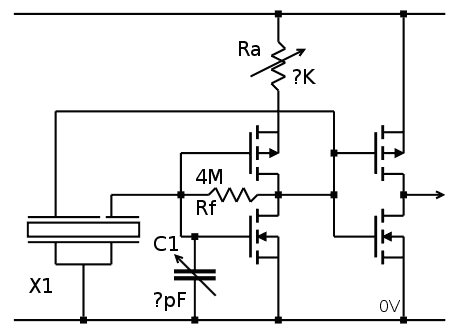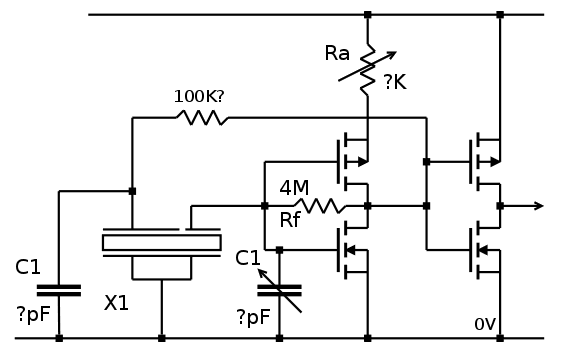The larger, slower 18KHz crystal allows me to experiment more. So I adapted this PNP circuit :

To make this one :

(I don't have 10M but 3.8M seem to be enough)
The good news : it oscillates.
However it does so at a higher voltage supply, which counters my previous estimations and arguments (explained in Change of architecture).
The gain is hard to tune with the power supply voltage and the amplification is very strong, to the point of saturation. I got a lot of unexpected waveforms. It's hard to get a pure sine and there is no gain control.
The feedback capacitor has a very important role too.
Due to the very high gain, I must probably use a single complementary pair of MOSFET. The gain would be tuned through a resistor between the N source and 0V. This would provide some offset, which would make it easier to drive another MOSFET gate that isolates the digital output.
Let's see how this one works :

Update: I "forgot" the RC network that adds the missing phase shift. Again.

Most quartz are meant to be used this way, and their frequency is tuned for parallel resonance. However, I found (on youtube) that this topology actually decreases the Q of the circuit, which becomes sensitive to other parameters (search term: "loaded Q", IIRC). That's why the 2-stage amplifier is great : it not only amplifies a LOT (too much in this case) but also provides 360° of phase shifting, with no passives, dissipation etc. so I expect the Q (and stability) to be higher.
 Yann Guidon / YGDES
Yann Guidon / YGDES
Discussions
Become a Hackaday.io Member
Create an account to leave a comment. Already have an account? Log In.